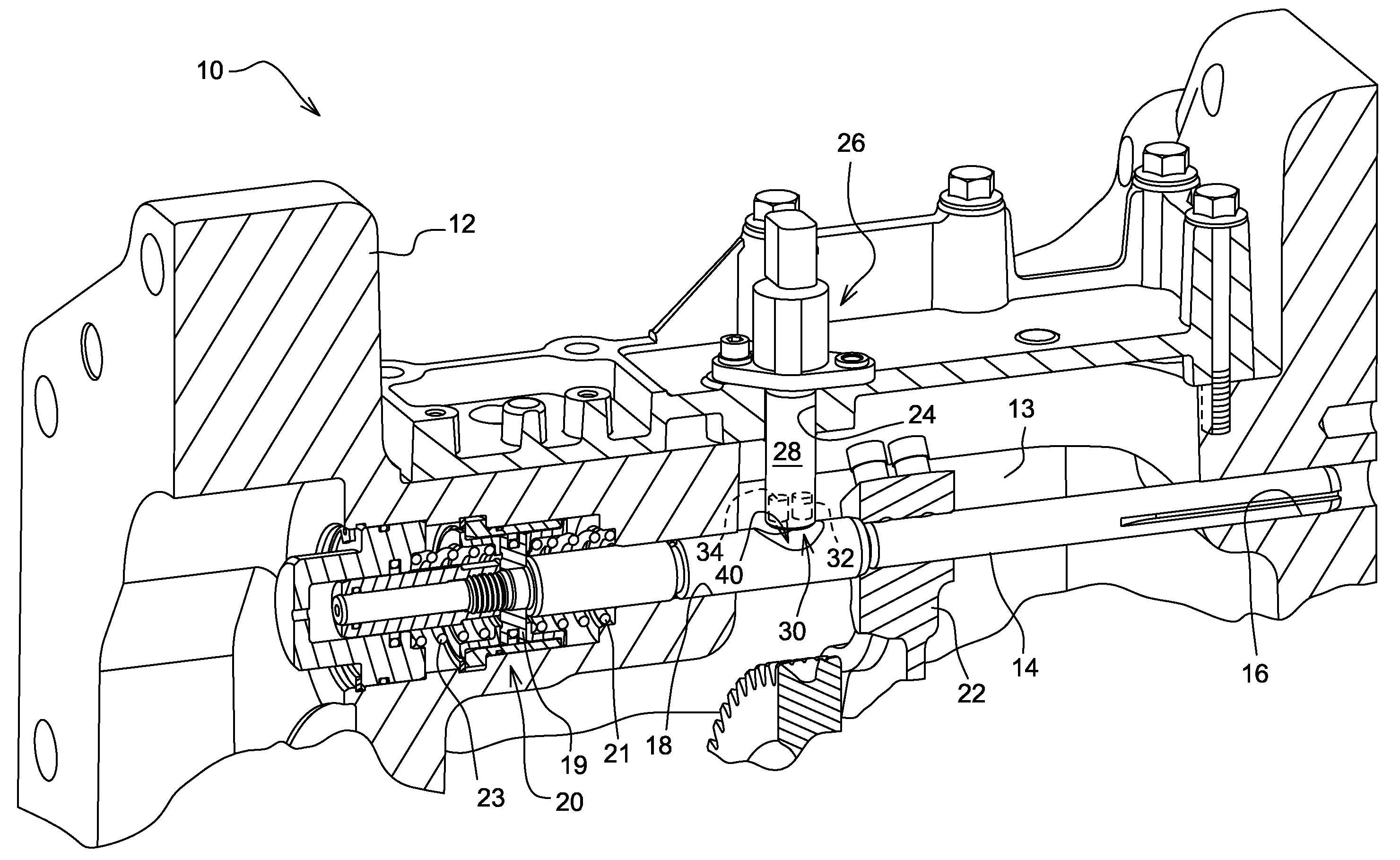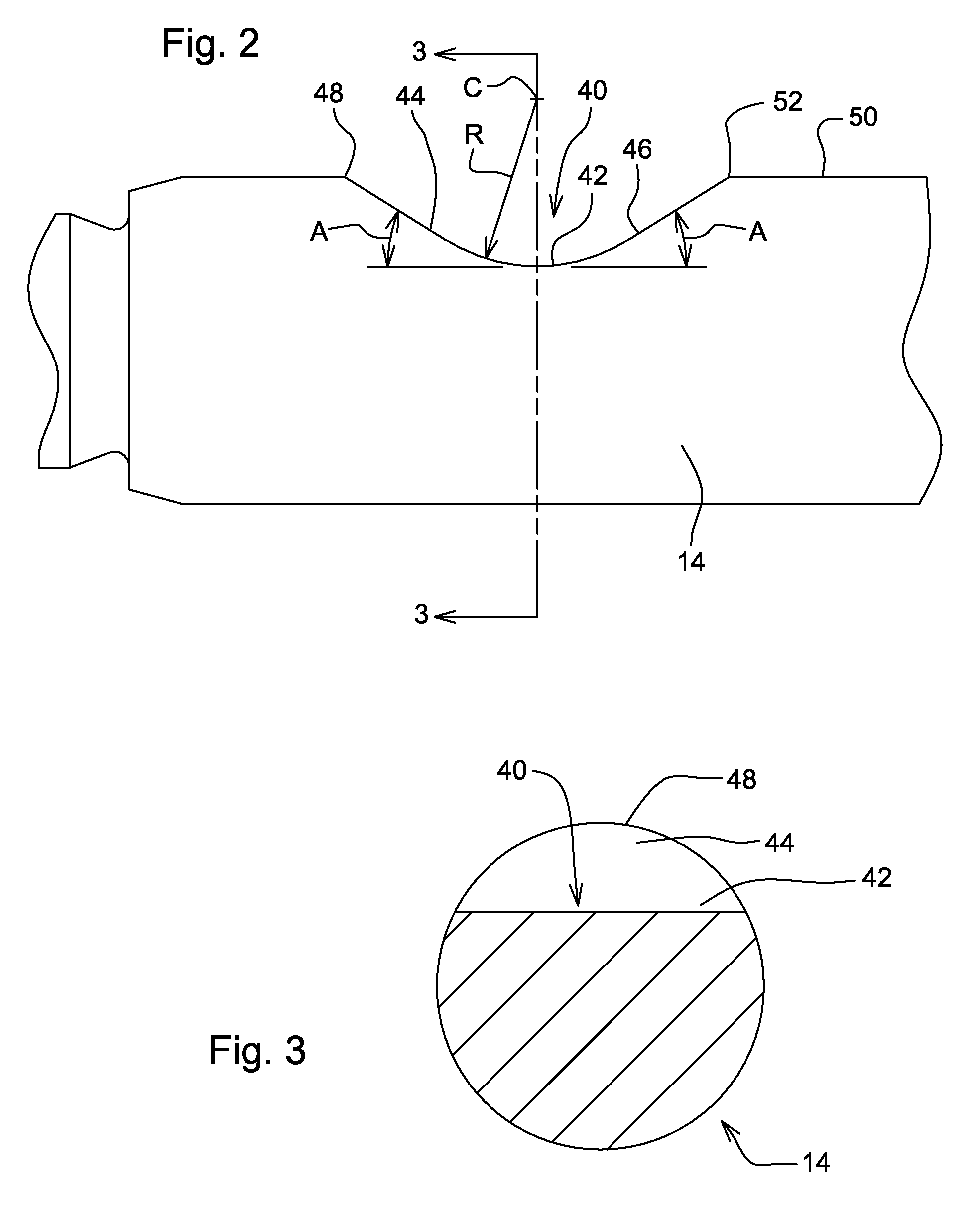Transmission shift rail position sensor
a technology of position sensor and shift rail, which is applied in the direction of instruments, galvano-magnetic hall-effect devices, mechanical equipment, etc., can solve the problems of limiting the access to the end of the rail, and the possibility of accurate measuremen
- Summary
- Abstract
- Description
- Claims
- Application Information
AI Technical Summary
Benefits of technology
Problems solved by technology
Method used
Image
Examples
Embodiment Construction
[0011]Referring to FIG. 1, a transmission range shift unit 10 includes a hollow housing 12 which encloses a plurality of range selector or shift rails or rails 14, one of which is shown in FIG. 1. The rail 14 slides over a distance of approximately 20 millimeters (mm) in rail bores 16 and 18 formed in the housing 12. The movement of the rail 14 is controlled by a hydraulic actuator 20. A shift fork 22 is fixed to a central part of the rail 14. The fork 22 operatively engages with transmission gears (not shown). The actuator 20 includes a piston 19 attached to an end of the shift rail 14. Hydraulic pressure will be supplied to either side of the piston 19 to move the shift rail to the desired position. When pressure is not applied to the piston 19, the shift rail 14 is held in a neutral position by springs 21 and 23. The housing forms a chamber 13. The shift fork 22 is attached to the shift rail 14 within the chamber 13.
[0012]The housing 12 also forms a sensor bore 24. The sensor bor...
PUM
 Login to View More
Login to View More Abstract
Description
Claims
Application Information
 Login to View More
Login to View More - R&D
- Intellectual Property
- Life Sciences
- Materials
- Tech Scout
- Unparalleled Data Quality
- Higher Quality Content
- 60% Fewer Hallucinations
Browse by: Latest US Patents, China's latest patents, Technical Efficacy Thesaurus, Application Domain, Technology Topic, Popular Technical Reports.
© 2025 PatSnap. All rights reserved.Legal|Privacy policy|Modern Slavery Act Transparency Statement|Sitemap|About US| Contact US: help@patsnap.com



